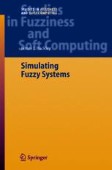Search
Search Results
-
Machine Shop I
The queuing system in this chapter is shown in Fig. 11.1. This application was adopted from a problem in ([1], p.594). We continue this problem in...
-
Inventory Control II
This chapter continues the inventory control problem studied in the previous chapter. The new system is shown in Fig. 17.1. We have added two things...
-
Project Network Model
The project network diagram is in Fig. 26.1. This problem is modelled after an example in [2]. The project consists of various jobs that must be...
-
Queuing II: No One-Step Calculations
In this chapter we will study the fuzzy system shown in Fig. 5.1 now reproduced as Fig. 9.1. This example was adapted from an example in [1]. The...
-
Priority Queues
This chapter will use the queuing system in Chaps. 5 and 9, but with priority orders. The system is shown in Fig. 19.1. Everything is the same as in...
-
Fuzzy Probability Theory
In this chapter we look more closely at the fuzzy binomial distribution, the fuzzy Poisson, and at the fuzzy normal,exponential and uniform...
-
Simulation
Now we come to the point were we need to select simulation software to do all the crisp simulations staring in Chap. 7. The author is not an expert...
-
Fuzzy Estimation
sThe first thing to do is explain how we will get fuzzy numbers, and fuzzy probabilities, from a set of confidence intervals which will be...
-
Simulation Optimization
In this chapter we discuss how we plan to solve the optimization problems attached to the simulation as expressed in (5-4)-(5-5) in Chap. 5, or...
-
Optimizing a Production Line
The simple production line considered in this chapter is shown in Fig. 20.1. This problem has been adapted from an example in [1]. This situation is...
-
Queuing I: One-Step Calculations
In this chapter we show situations where simulation can produce the same results as fuzzy calculations which employ the extension principle. We argue...
-
Simulation Programs
In this chapter we present some of the GPSS programs used in Chaps. 9–26. We had to omit many programs in order to keep this chapter. less that 20...
-
Summary and Conclusions
The first objective of this book is to explain how many systems naturally become fuzzy systems. The second objective is to show how regular (crisp)...
-
Virtual Reality in Healthcare
In our modern 21st century, daily life would be unthinkable without computers. Multimedia and virtual reality are useful for people with special...
-
Access to Information on Demand by the aid of Digital Talking Books
This chapter addresses the concept and the fundamental ideas of the digital talking book (DTB), with a particular focus on DTBs in the DAISY format....
-
11 Random Vibrations of Large Finite Element Systems
The basic idea for the computation of the stochastic response is based on the Karhunen-Loève expansion of the stochastic loading. For each Karhunen-...
-
4 Finite Element Method
In this chapter, the fundamentals of the displacement-based finite element method are reiterated in a concise form, details can be found in a number...
-
5 Non-Linear Static Analysis
The state of the art in the capability to predict the stability behavior of shell structures refers to areas such as asymptotic analysis [69] and...
-
7 Rational Treatment of Uncertainties
Structural analysis up to this date, generally is still based on a deterministic conception. Observed variations in loading conditions, material...
-
9 Direct Monte Carlo Simulation
The evaluation of the stochastic response by the Monte Carlo simulation technique is a powerful method for highly nonlinear systems as well as for...
